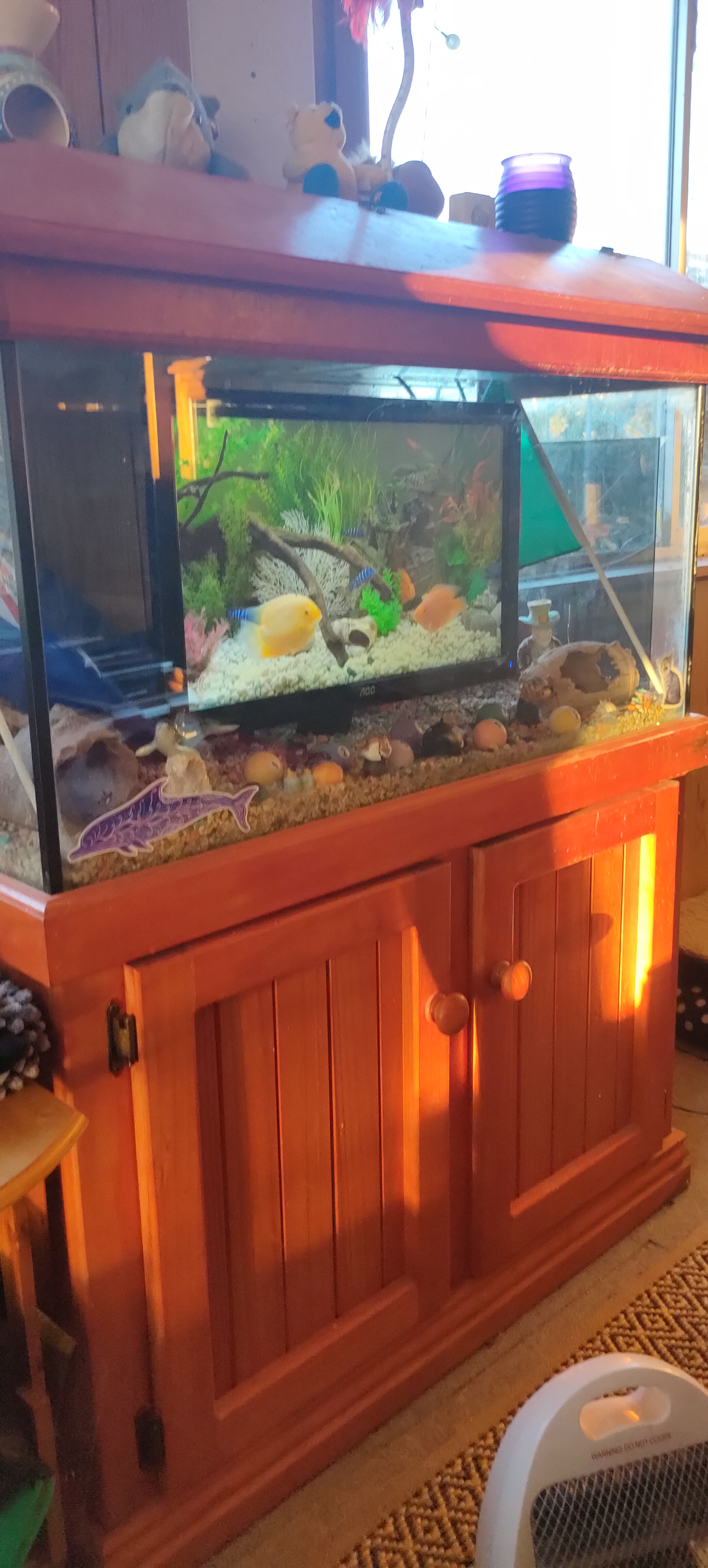My first server box was a laptop that was ten years old at the time.
I love when people find useful tasks for older tech or extend the life of older tech. There is enough e-waste out there.
Old laptops can are actually great servers—hear me out:
- Built in KVM
- Low power consumption
- Battery = UPS for power blips
- SSD (sometimes)
- Wifi + Ethernet = Redundant NICs
- Quiet (sometimes)
- Small form factor
The battery is usually long gone by the time it becomes a server though.
Really old laptops have PCMCIA slots too that you can hook into newer interfaces. I used a PCMCIA eSATA card for a laptop NAS!
The battery is usually long gone by the time it becomes a server though.
Absolutely. I still have my laptop from high school, and it’s battery has been long gone. The screen is on its last legs.
Maybe it will be a server one day, but for now it’s my DnD laptop. Sucks a bit when somebody bumps the power cord and the battlemap turns off. But it’s still limping by.
Yeah, using a 9 year old work laptop as my home server. Then with the surging energy prices last year I decided to switch out that laptop with a raspberry pi 4 as server.
Conclusion: I now have a laptop and a RPI running 24/7 🤦♂️
Conclusion: I now have a laptop and a RPI running 24/7 🤦♂️
Sounds like a win to me. lol
My RPi4s and 3s will out perform my older laptops, apart from the just retired P50 (gpu nearly died). That one is 6y, the others are 11y old HPs and a 16y 32 bit Xxodd (wierd brand). tje RPis are sufficient for normal server use, the nwew laptop (last gen i9 with 64G mem) can host (nested) kvm clients, so no need for extra hardware. (And still I save them, just in case ;) )
I wouldn’t recommend a RPi for a server for anyone looking into this. Something like a ThinkCentre M92P will cost less and run circles around a RPi4, at not much more power. It will also support x86 and has Quick Sync tech which makes is great if you use something like jellyfin and need to do transcoding.
Even if you really need a low power SBC then a RPi4 was never the best option. The RockPro64 was released an entire year prior to the RPi4, and has a faster CPU. It supports booting from eMMC, and could boot from USB for like 2 years before the RPi figured it out. It also has a standard PCIe slot for adding SATA cards or extra ethernet ports instead of using the weird hat thing.
Personally though, I don’t think the tiny/mini/micro PCs can be beat, I run two of them at home for all my services.
I’m glad I don’t need computing power then. It just runs a webserver, 2 databases, mail environment, puppet master, icr client and some random stuff I just start and forget.
It does the trick here and it and it’s predecessor Rpi3 and 2 managed, are quiet and enough for here. Both 3s boot from microsd and run from USB SSD for the OS, data is on nas. All are stock, no extentions, apart from an extra USB nic on my firewall. (Somehow having 2 different physical interfaces sounded preferable to me for a firewall)
The old 3s are now interface for my smart meter and a domoticz system.
BTW I see the Thinkcenter you mention for €250 online, My RPi4 cost me as kit €108 (8GB version). That was before all prizes went trough the roof though, as I see the separate board now for €125.
BTW I see the Thinkcenter you mention for €250 online, My RPi4 cost me as kit €108 (8GB version). That was before all prizes went trough the roof though, as I see the separate board now for €125.
A ThinkCentre M92P can be had for < €100 on eBay, like even down to €40-70. I’m not saying you shouldn’t use a RPi if you already have them, but RPi has not been worth it going back to the RPi3. If anyone needs to get hardware to setup their server, the tiny/mini/micro lines are better.
https://www.servethehome.com/introducing-project-tinyminimicro-home-lab-revolution/
I was put off of RPis since the RPi3 too, the way they misled people with their marketing about it having a gigabit port which was on a shared bus so it was not really true put me off of them. And Pine64 boards have been better going back to then with the RockPro over the RPi3, and the RockPro64 way better than the RPi4.
undefined> I was put off of RPis since the RPi3 too, the way they misled people with their marketing about it having a gigabit port which was on a shared bus so it was not really true put me off of them.
Yeah, that was the main drawback of the 3, the 1 GB port that was linked to the USB hub, which couldn’t do more then 480 Mbps, in total, shared over all USB devices. At least it did a GB handshake and managed more then 100 Mbps. ;)
The 4 However, has a separate chip for the on-board GB interface and I manage over 900 Mbps with it. When you use one as firewall and want to use 2 separate interfaces, you still have to use an USB interface, which here results in 300 Mbps trough both interfaces (after kicking the internal interface irq handling from cpu0). I’m probably one of the few so crazy to use an RPi that way. I came from 50 Mbps line, so anything faster is ok by me. (especially for the same monthly fee ;) )
I took my first foray into media hosting by running subsonic on an old emachines laptop! ain’t nothing wrong!
I’m patiently waiting for someone (anyone) I know to decide to throw out an old laptop.
Gonna bite their hand off for it, install Linux and proceed to fuck around and find out.
My old dell latitude handles plex with an old USB HDD well enough.
You just have to run a lean Linux OS to revive these old systems.
You can run a debloated version of windows 11 like tiny11 in 1.1GB RAM these days.
Why run the worse OS though?
Because some old software like Picasa have no offline alternative.
Yeah until it stopped working. The heat is the problem. It lasts for like 6 months of 24/7 usage.
A busted up acer netbook on a shelf in my basement ran a Final Fantasy XI private server for several years till it died and I migrated to something sturdier.
Display was wrecked, keyboard destroyed, trackpad gone… but a single usb port and a vga port still worked so I was able to install an OS. then I removed those and only ever remoted into it. I actually removed the busted display and keyboard to it’d vent heat better - it ran pretty hot and the ventilation on that thing was designed poorly. The reason the keyboard died was actually heat related, melting its underside and warping it.
FFXI Private servers will run on a 2 decades old potato, so this worked until it finally died despite some seriously pathetic specs.
(1gb ram upgraded to 2gb, 1 ghz intel atom single core cpu, yes really)
I turned my ten year old Toshiba i7 with a cracked LCD into a virtual fish tank after the last fish died.

Cool. A friend had one in a fireplace that played a fire video in the evenings - with the crackling sounds too.
I salute your creativity haha
That is so awesome!
ATBGE!
Got a laptop with a busted up screen running Plex and it’s pretty awesome! We don’t need screens where we’re going!
For a while I was using a 10 year old Mac Pro G5 as a home server. Conveniently it also doubled as a space heater in the winter.
It also has 2 Ethernet ports so it can
doubletriple as a cheese grater. :D
Old laptops have little resell value. They work well as low powered hobby servers though.
I used to use my 10 year old old netbook (intel atom n270 2gb ram - ubuntu server) as a server for Plex, calibre, pihole, ssftp.
Now I am using a Raspberry Pi 4 8GB Ram, as it consumes less electricity. Old laptops are consuming (except HDDs/SSDs) 10-30 watt. Raspberry Pi in indle consumes 2watt and when i am using it at mac power with an external hdd consumes 12watt.
It’s hard to get a hold of the raspberry pi model 4 where I am unfortunately. I had wanted to use it to host some hobby projects locally and maybe as a low powered game sever, though i doubt it could handle it. It might be a fun project to try run an older laptop off solar l, I must look into it anyone has tried that.
I’ve never had an internet connection that allows normal server connections. I guess I could set it up with Cloudflare or something.
I’ve been more likely to use old laptops as thin clients… run Linux on my desktop, then connect to it with VNC so the laptop doesn’t really have to do anything. Or set them up with a really lightweight Linux desktop like WindowMaker and use them to play music out in my studio.












